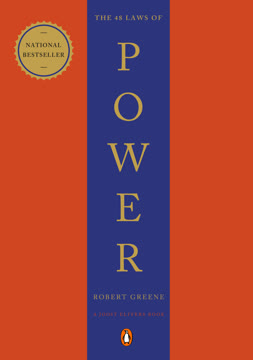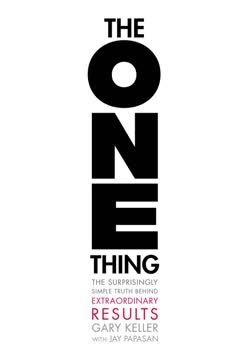मुख्य निष्कर्ष
1. 80/20 सिद्धांत: असंतुलन का एक सार्वभौमिक नियम
80/20 सिद्धांत कहता है कि कारणों, प्रयासों या इनपुट का एक छोटा हिस्सा अक्सर परिणामों, आउटपुट या पुरस्कारों का अधिकांश हिस्सा उत्पन्न करता है।
सार्वभौमिक असंतुलन। 80/20 सिद्धांत, जिसे पारेतो सिद्धांत भी कहा जाता है, जीवन और व्यवसाय के विभिन्न पहलुओं को समझने और सुधारने का एक शक्तिशाली उपकरण है। यह बताता है कि लगभग 80% प्रभाव 20% कारणों से आते हैं। यह सिद्धांत कई क्षेत्रों में लागू होता है:
- अर्थव्यवस्था: 20% आबादी के पास अक्सर 80% धन होता है
- व्यवसाय: 20% उत्पाद या ग्राहक आमतौर पर 80% लाभ उत्पन्न करते हैं
- व्यक्तिगत जीवन: हमारे 20% कार्य 80% संतुष्टि देते हैं
व्यावहारिक उपयोग। इस असंतुलन को समझकर हम उन महत्वपूर्ण कुछ कारकों पर ध्यान केंद्रित कर सकते हैं जो वास्तव में मायने रखते हैं:
- अपने सबसे उत्पादक 20% प्रयासों की पहचान करें और उन्हें बढ़ावा दें
- कम उत्पादक 80% गतिविधियों को कम करें या समाप्त करें
- इस सिद्धांत को समय प्रबंधन, संबंधों और व्यक्तिगत लक्ष्यों में लागू करें
2. व्यवसाय प्रदर्शन बढ़ाने के लिए 80/20 विश्लेषण का उपयोग
कुछ महान बनाने का सबसे अच्छा तरीका है कुछ सरल बनाना।
रणनीतिक फोकस। 80/20 विश्लेषण व्यवसायों को उनके सबसे लाभकारी क्षेत्रों की पहचान करने और संसाधनों का अनुकूलन करने में मदद करता है। मुख्य कदम हैं:
- उन 20% उत्पादों, ग्राहकों या गतिविधियों की पहचान करें जो 80% लाभ उत्पन्न करते हैं
- इन उच्च प्रदर्शन वाले क्षेत्रों को अधिक संसाधन आवंटित करें
- कम प्रदर्शन वाले हिस्सों को सरल बनाएं या समाप्त करें
डेटा-आधारित निर्णय। 80/20 विश्लेषण का उपयोग करें:
- उत्पाद लाइनों को परिष्कृत करने के लिए
- विपणन प्रयासों को लक्षित करने के लिए
- प्रमुख ग्राहकों के लिए ग्राहक सेवा में सुधार के लिए
- इन्वेंटरी प्रबंधन को अनुकूलित करने के लिए
महत्वपूर्ण कुछ पर ध्यान केंद्रित करके, व्यवसाय अपने प्रदर्शन और लाभप्रदता में उल्लेखनीय सुधार कर सकते हैं।
3. सरलता: व्यवसाय की क्षमता खोलने की कुंजी
सरलता सुंदर है। व्यवसायी जटिलता को पसंद करते हैं। जैसे ही कोई सरल व्यवसाय सफल होता है, उसके प्रबंधक उसे और अधिक जटिल बनाने में बहुत ऊर्जा लगाते हैं।
सरलता को अपनाएं। जटिलता अक्सर अक्षमता और कम लाभ का कारण बनती है। सरलता की शक्ति का उपयोग करने के लिए:
- उत्पादों की पेशकश को सरल बनाएं
- व्यवसाय प्रक्रियाओं को सरल करें
- मुख्य क्षमताओं पर ध्यान दें
- गैर-आवश्यक कार्यों को आउटसोर्स करें
जटिलता पर विजय। प्रबंधक अक्सर सरलता को अपनाने से डरते हैं क्योंकि:
- परिवर्तन का भय
- मौजूदा प्रणालियों से जुड़ाव
- यह गलत धारणा कि जटिलता ही परिष्कार है
सरलता को अपनाकर व्यवसाय:
- लागत कम कर सकते हैं
- ग्राहक संतुष्टि बढ़ा सकते हैं
- बाजार परिवर्तनों के प्रति अधिक चुस्त और उत्तरदायी बन सकते हैं
- समग्र लाभप्रदता बढ़ा सकते हैं
4. अधिकतम प्रभाव के लिए महत्वपूर्ण कुछ ग्राहकों पर ध्यान केंद्रित करना
हमारी उपलब्धि और खुशी का 80% हिस्सा हमारे समय के 20% में होता है—और इन शिखरों को काफी बढ़ाया जा सकता है।
ग्राहक प्राथमिकता। सभी ग्राहक समान मूल्यवान नहीं होते। अधिकतम प्रभाव के लिए:
- उन 20% ग्राहकों की पहचान करें जो 80% लाभ उत्पन्न करते हैं
- इन प्रमुख ग्राहकों को असाधारण सेवा प्रदान करें
- इन संबंधों को बनाए रखने और बढ़ाने के लिए लक्षित रणनीतियाँ विकसित करें
रणनीतिक संसाधन आवंटन। अपने प्रयासों को केंद्रित करें:
- अपने शीर्ष ग्राहकों की आवश्यकताओं को समझने पर
- उनकी आवश्यकताओं के अनुसार उत्पाद या सेवाएँ विकसित करने पर
- उच्च मूल्य वाले ग्राहकों के लिए वफादारी कार्यक्रम बनाने पर
- प्रमुख खातों को बेहतर सेवा देने के लिए कर्मचारियों को प्रशिक्षित करने पर
अपने सबसे मूल्यवान ग्राहकों पर ध्यान केंद्रित करके, आप ग्राहक संतुष्टि, वफादारी और समग्र व्यवसाय प्रदर्शन में महत्वपूर्ण वृद्धि कर सकते हैं।
5. समय क्रांति: उत्पादकता और खुशी को अधिकतम करना
समय की कमी नहीं है। वास्तव में, हमारे पास समय की भरमार है। हम केवल अपने समय का 20% ही सही तरीके से उपयोग करते हैं।
समय की प्रचुरता की सोच। समय को दुर्लभ मानने के बजाय, यह समझें कि हमारे पास पर्याप्त समय है लेकिन हम अक्सर इसे कुशलतापूर्वक उपयोग नहीं करते। अपने समय के प्रति दृष्टिकोण को बदलने के लिए:
- उन 20% गतिविधियों की पहचान करें जो आपके 80% परिणाम या खुशी देती हैं
- इन उच्च मूल्य वाली गतिविधियों पर अधिक समय बिताएं
- कम मूल्य वाली गतिविधियों को समाप्त करें या सौंप दें
व्यावहारिक समय प्रबंधन। इन रणनीतियों को अपनाएं:
- कार्यों को प्राथमिकता देने के लिए 80/20 नियम का उपयोग करें
- समान गतिविधियों को एक साथ करें ताकि दक्षता बढ़े
- स्पष्ट सीमाएं निर्धारित करें और "ना" कहना सीखें
- ध्यान केंद्रित काम के लिए बिना बाधा के समय ब्लॉक बनाएं
- नियमित रूप से अपने समय आवंटन की समीक्षा और समायोजन करें
उच्च प्रभाव वाली गतिविधियों पर ध्यान केंद्रित करके और समय बर्बाद करने वाली चीजों को खत्म करके, आप अपनी उत्पादकता और व्यक्तिगत संतुष्टि दोनों को काफी बढ़ा सकते हैं।
6. बुद्धिमान आलस्य के माध्यम से करियर सफलता
अधिकारी केवल चार प्रकार के होते हैं... अंत में, बुद्धिमान आलसी होते हैं। वे सबसे उच्च पदों के लिए उपयुक्त होते हैं।
रणनीतिक दक्षता। "बुद्धिमान आलस्य" का मतलब है कि सबसे सफल लोग कम प्रयास में अधिक हासिल करने के तरीके खोजते हैं। इस सिद्धांत को लागू करने के लिए:
- अपने मजबूत पक्षों के अनुरूप उच्च प्रभाव वाले कार्यों पर ध्यान दें
- कम मूल्य वाली गतिविधियों को सौंपें या स्वचालित करें
- काम को सरल बनाने के लिए सिस्टम और प्रक्रियाएं विकसित करें
करियर उन्नति। कुशलता से करियर चढ़ने के लिए:
- अपनी अनूठी प्रतिभाओं की पहचान करें और उन्हें विकसित करें
- ऐसे पदों की तलाश करें जो आपकी ताकत को अधिकतम और कमजोरियों को न्यूनतम करें
- सक्षम सहयोगियों और अधीनस्थों का नेटवर्क बनाएं
- अपने मूल्य-से-प्रयास अनुपात को बढ़ाने के निरंतर तरीके खोजें
स्मार्ट तरीके से काम करके, आप अधिक सफलता प्राप्त कर सकते हैं और साथ ही संतुलित और पूर्ण जीवन जी सकते हैं।
7. खुशी की सात आदतें: भावनात्मक बुद्धिमत्ता का विकास
स्वभाव भाग्य नहीं है।
भावनात्मक बुद्धिमत्ता। खुशी पूर्वनिर्धारित नहीं होती, बल्कि इसे भावनात्मक बुद्धिमत्ता विकसित करके बढ़ाया जा सकता है। खुशी की सात आदतें हैं:
- दैनिक शारीरिक व्यायाम
- मानसिक उत्तेजना
- आध्यात्मिक या कलात्मक उत्तेजना
- दयालुता के कार्य
- दोस्तों के साथ गुणवत्तापूर्ण समय
- आत्म-प्रसन्नता
- आत्म-प्रशंसा
व्यावहारिक अनुप्रयोग। अपनी खुशी बढ़ाने के लिए:
- इन आदतों को अपनी दैनिक दिनचर्या में शामिल करें
- उन गतिविधियों पर ध्यान दें जो आपको आनंद और संतुष्टि देती हैं
- सकारात्मक संबंधों को विकसित करें
- कृतज्ञता और जागरूकता का अभ्यास करें
- अपनी भावनात्मक बुद्धिमत्ता को निरंतर सुधारें
इन आदतों को अपनाकर और भावनात्मक बुद्धिमत्ता को विकसित करके, आप अपने समग्र कल्याण और जीवन संतोष को काफी बढ़ा सकते हैं।
अंतिम अपडेट:
FAQ
What's The 80/20 Principle by Richard Koch about?
- Core Concept: The book introduces the 80/20 Principle, which suggests that 80% of results come from 20% of efforts. This principle is applicable across various aspects of life, including business and personal relationships.
- Applications: Richard Koch illustrates how this principle can be applied to enhance efficiency and effectiveness in business, personal productivity, and time management.
- Life Enhancement: Beyond business, the book emphasizes improving personal happiness and fulfillment by focusing on what truly matters in life.
Why should I read The 80/20 Principle by Richard Koch?
- Transformative Insights: The book provides practical insights that can lead to significant improvements in both personal and professional life by prioritizing impactful activities.
- Proven Success: Koch shares examples and case studies demonstrating successful implementation of the 80/20 Principle in various organizations, leading to increased profitability and efficiency.
- Simplicity and Clarity: The writing is accessible and engaging, making complex ideas easy to understand and apply, helping readers grasp the principle's importance and relevance.
What are the key takeaways of The 80/20 Principle by Richard Koch?
- Focus on the Vital Few: Identify and concentrate on the 20% of activities that yield 80% of the results for greater efficiency and effectiveness.
- Challenge Conventional Wisdom: The book encourages questioning the belief that all inputs are equally valuable, highlighting the importance of recognizing key factors.
- Embrace Simplicity: Koch advocates for simplifying processes to enhance productivity by eliminating unnecessary tasks and focusing on what truly matters.
What are the best quotes from The 80/20 Principle by Richard Koch and what do they mean?
- “A minority of causes...”: This quote encapsulates the essence of the 80/20 Principle, emphasizing the importance of identifying key success factors.
- “The 80/20 Principle is the cornerstone...”: Highlights the transformative potential of applying the principle in everyday life for greater satisfaction and achievement.
- “Simplicity is beautiful.”: Underscores the idea that reducing complexity can lead to improved efficiency and effectiveness.
How can I apply the 80/20 Principle in my work?
- Identify Key Tasks: Analyze daily tasks to determine which contribute most to your goals and focus energy on these high-impact activities.
- Evaluate Customer Relationships: Identify the 20% of clients generating 80% of revenue and prioritize building strong relationships with them.
- Streamline Processes: Simplify workflows by eliminating unnecessary steps and focusing on the most effective methods to increase efficiency.
How can I apply the 80/20 Principle in my personal life?
- Identify Key Relationships: Focus on the 20% of relationships that bring the most joy and fulfillment, nurturing these connections.
- Evaluate Activities: Assess daily activities to determine which yield the most happiness or satisfaction, increasing time spent on these.
- Set Clear Goals: Use the principle to set personal goals aligning with values and passions, focusing efforts on what truly matters.
What is the difference between 80/20 Analysis and 80/20 Thinking in The 80/20 Principle by Richard Koch?
- 80/20 Analysis: A systematic, quantitative method of comparing causes and effects to identify the most impactful factors, involving data gathering.
- 80/20 Thinking: An intuitive approach encouraging individuals to hypothesize about key factors affecting outcomes, allowing quicker decision-making.
- Complementary Methods: Both methods are valuable; analysis is useful for critical decisions requiring data, while thinking can be applied for faster insights.
How does the 80/20 Principle relate to time management?
- Prioritization: Helps identify which tasks are most important and should be prioritized, focusing on the 20% yielding the most significant results.
- Eliminating Time Wasters: Recognizing that 80% of activities may contribute little to success allows for eliminating or delegating low-value tasks.
- Work-Life Balance: Encourages focusing on what truly matters, both professionally and personally, enhancing overall satisfaction.
What are some practical examples of the 80/20 Principle in business?
- Customer Profitability: Often, 20% of customers generate 80% of profits; focusing on these key customers can lead to more effective strategies.
- Productivity Analysis: Employees can find that a small number of activities contribute to the majority of their output, enhancing productivity by prioritizing these tasks.
- Resource Allocation: Businesses can allocate resources more effectively, ensuring impactful projects receive necessary attention and funding.
What are some common misconceptions about the 80/20 Principle?
- Misunderstanding Proportions: Many assume the 80/20 ratio is fixed; in reality, it serves as a guideline, and actual proportions can vary widely.
- Overlooking the Soft Side: Critics argue it only applies to quantitative measures, ignoring its relevance in qualitative aspects like relationships.
- Assuming Simplicity Equals Easy: While advocating for simplicity, effective implementation requires effort and introspection to identify vital factors.
What are the potential pitfalls of ignoring the 80/20 Principle?
- Wasted Resources: Failing to recognize the vital few can lead to misallocation of time, money, and effort on low-impact activities.
- Complexity Overload: Ignoring the principle may result in unnecessary complexity, leading to inefficiencies and increased costs.
- Missed Opportunities: Not focusing on impactful factors may overlook significant opportunities for growth and improvement.
How can I measure the effectiveness of the 80/20 Principle in my life?
- Track Outcomes: Keep a record of activities and their outcomes to identify which yield the most significant results, refining focus over time.
- Reflect Regularly: Set aside time for regular reflection on goals and achievements, assessing time spent on the right activities.
- Seek Feedback: Engage with trusted friends or mentors for insights into progress, helping see areas for improvement and validate application.
समीक्षाएं
80/20 सिद्धांत को लेकर मिली-जुली प्रतिक्रियाएँ देखने को मिलती हैं। कई पाठक इसकी उत्पादकता और समय प्रबंधन पर दी गई समझ को सराहते हैं, और इसे व्यवसायिक तथा व्यक्तिगत जीवन दोनों के लिए उपयोगी मानते हैं। वे इस बात की प्रशंसा करते हैं कि किताब ने उच्च प्रभाव वाले कार्यों पर ध्यान केंद्रित करने की आवश्यकता पर जोर दिया है। हालांकि, कुछ लोग इसे दोहरावपूर्ण और गहराई में कमतर बताते हैं, उनका मानना है कि इस मूल सिद्धांत को और संक्षिप्त तरीके से समझाया जा सकता था। गैर-व्यावसायिक संदर्भों में इसकी प्रासंगिकता पर भी विवाद है, क्योंकि कुछ पाठकों को यह पेशेवर माहौल के बाहर कम उपयोगी लगती है। कुल मिलाकर, पाठक इस सिद्धांत के महत्व को स्वीकार करते हैं, लेकिन किताब की प्रस्तुति और व्यापक मूल्य को लेकर उनकी राय अलग-अलग है।
Similar Books





















